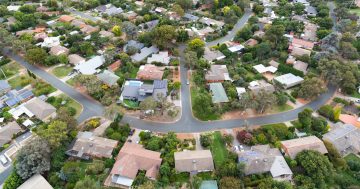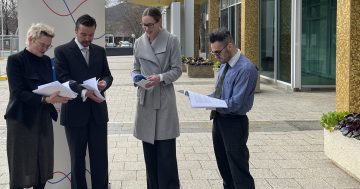
For an increasing number of people in Canberra, housing is becoming a nightmare.
There are renewed calls for Government action to support the increasing number of ACT lower income households as they head into winter and fail to keep up with cost of living pressures, particularly rents, utilities and fuel.
On the eve of the Federal Budget and with the ACT’s to follow, the latest ACTCOSS ACT Cost of Living Report, which looks at changes in the CPI and Selected Living Cost Indexes in the capital over the past year, shows that utility prices rose the most and well above the national rate.
Gas prices rose by an unprecedented 18 per cent in just one quarter, with the prices of other essential goods and services in Canberra – including housing, health, education and transport – also rising above the national rate.
The research has also re-assessed how many people are living in poverty in the ACT, reporting an estimated overall poverty rate of 9.2 per cent (34,543 people), while the estimated child poverty rate is significantly higher at 12.7 per cent (8897 children).
ACTCOSS, warning that Canberra was at the crossroads, says the Federal Government needs to lift the rate of benefits – including Newstart Allowance, Widow Allowance, Sickness Allowance, Austudy, Abstudy, and Youth Allowance, Special Benefit, and Crisis Payment – by $75/week from January 2019, and index them to wage and price movements.
It also wants it to establish an independent statutory Social Security Commission to advise on the financial needs of people requiring social security payments to afford basic essentials and improve employment services to help more people into jobs.
At a local level, ACTCOSS says the ACT Government needs to ensure more affordable housing, broaden transport and other concessions, and ensure greater digital inclusion.
It is calling on the Government to create a $100 million investment fund for community housing providers and increase the supply of public housing to keep pace with population growth.
It wants the Government to legislate minimum 5 star energy ratings as a requirement for all private rental housing, and create a Zero Emissions housing support fund that supports private rental housing owners to install energy supply and efficiency infrastructure.
On digital inclusion, ACTCOSS wants a Smart City strategy, the Government’s free public wi-fi access expanded to outer suburban areas and students in low-income households to be able to purchase data as well as devices.
ACTCOSS Director, Ms Susan Helyar said it was the fourth consecutive year that low income households’ cost of living was growing at a faster rate than higher-income households.
“Many Canberra families are in a position of having to decide between eating or turning on the heating, while over a third of low income rental households in the ACT experience rental stress. With the release of Anglicare’s 2018 Rental Affordability Snapshot just last week we saw that, yet again, there are no affordable and appropriate private rental properties for people on Newstart or Youth Allowance, or for a lone parent living on the minimum wage in the ACT,” she said.
“It is a shock to see how far income support payments such as Newstart and Youth Allowance have fallen behind the cost of living, with essential goods and services becoming less and less affordable for income support recipients. Newstart has not increased in real terms in 24 years and now more than half of the people on Newstart live below the poverty line.”
She said that for a sole parent with two children on Newstart the weekly cost of living rose by $13.40 over the past year, while payments only rose by $5.45.
The analysis found that out of 120,000 ACT households, 13,600 (9.3 per cent) could not pay electricity, gas, or telephone bills on time, and 5600 (3.8 per cent) could not meet mortgage or rent payments on time.
It found 2300 households (1.6 per cent) went without meals, 2800 (1.9 per cent) could not heat their homes, 10,300 (7.1 per cent) sought financial help from friends or family, and 3100 (2.1 per cent) sought assistance from welfare /community organisations.
Ms Hellyar said the latest gas price increase has had a huge impact and the Government needed to do something about rental housing.
“There nothing you can do about the cold but there is something you can do about the quality of the rental housing in this city so that people aren’t just having their heat go out the roof even if they can afford to turn it on,” she told ABC radio.
Ms Hellyar believed Canberra was at a crossroads and echoed comments recently by former chief minister Jon Stanhope.
“In a city that describes itself as the most livable city, as one of the most visitable cities in Australia, up and coming with innovation and diversity and strengths, we can’t have a city where 35,000 people are making these kinds of choices, that is not a credible foundation for a strong and vibrant city,” she said.
“We have had an enormous focus on investing in the city and its hard infrastructure and its renewal of its built environment. We need an investment in the social infrastructure of this city to match the level of investment in its built environment and to be a truly wonderful city to live in it has to be wonderful for everybody, not just those with double incomes and secure jobs only.”
The 2018 ACT Cost of Living Report is available on the ACTCOSS website: www.actcoss.org.au




















